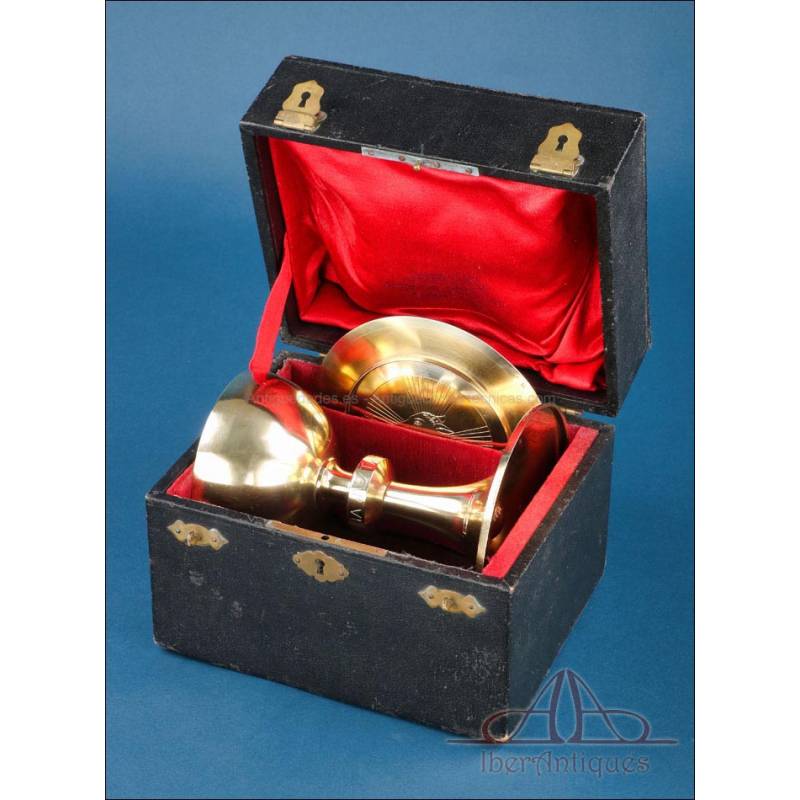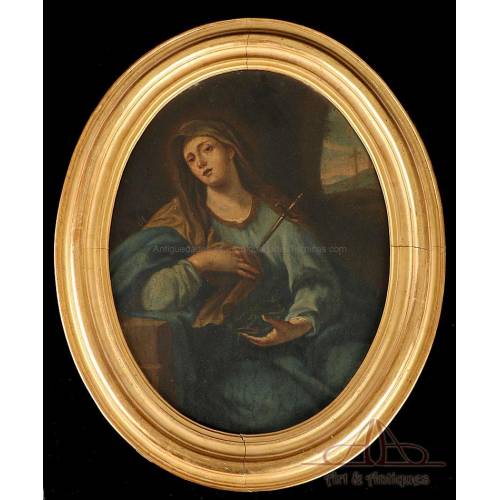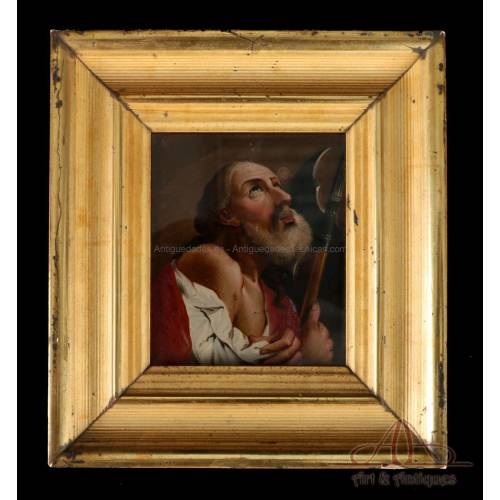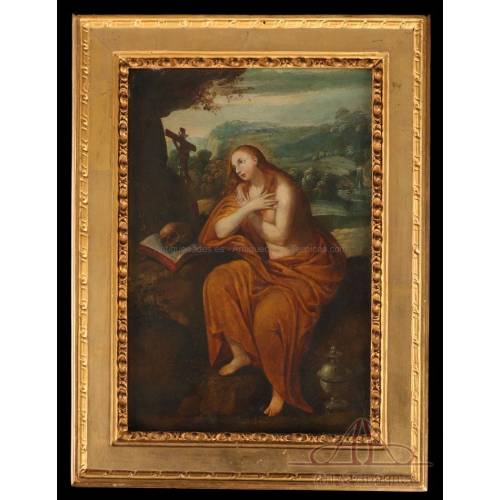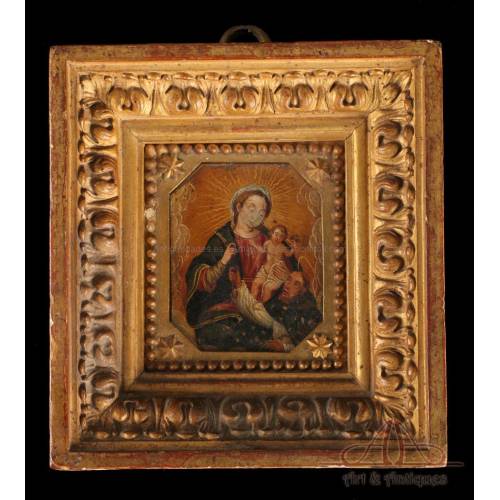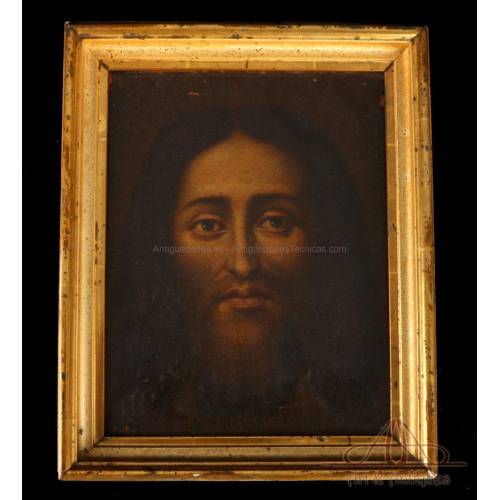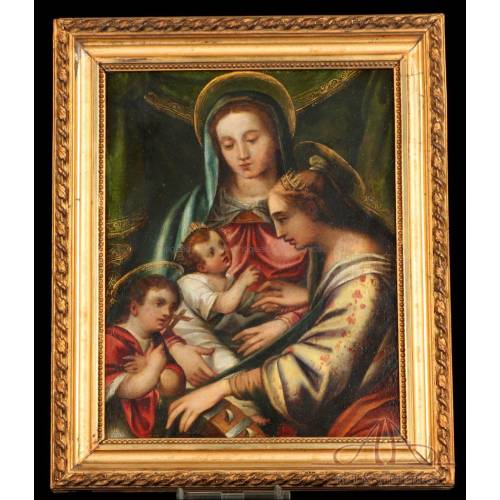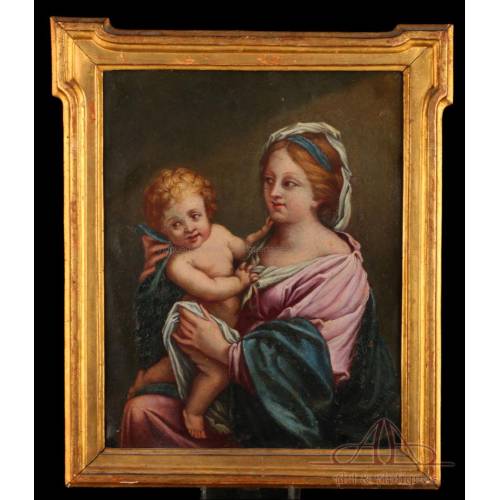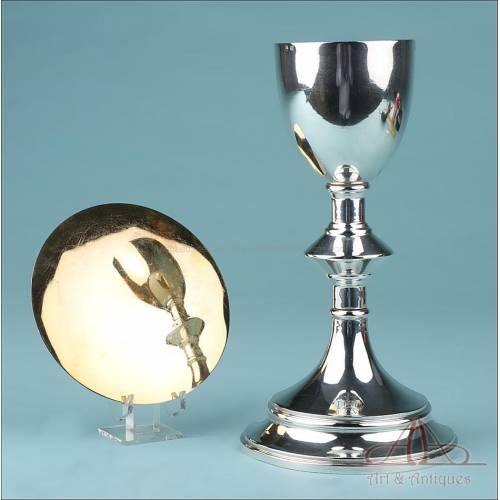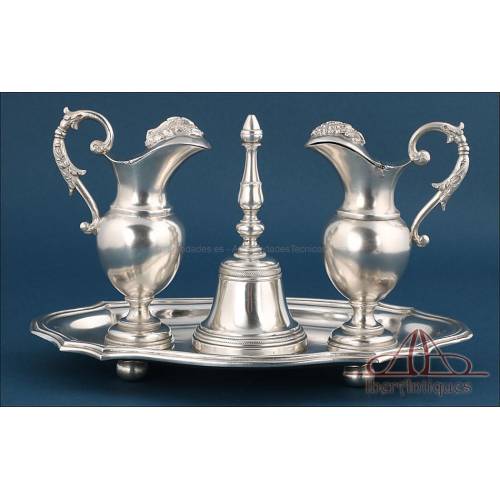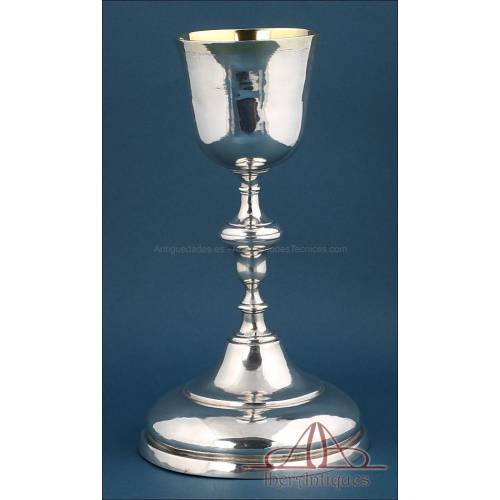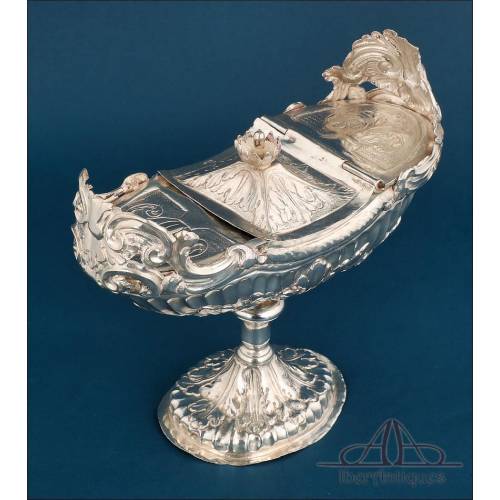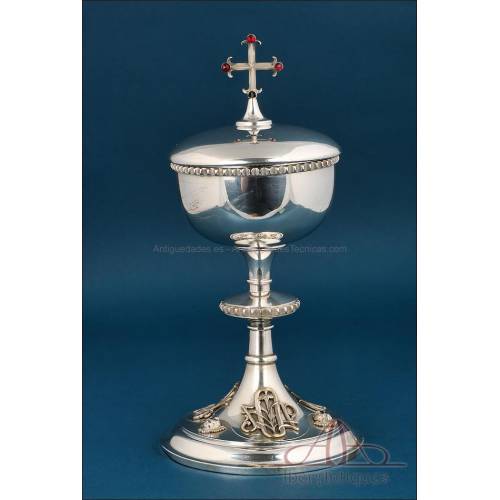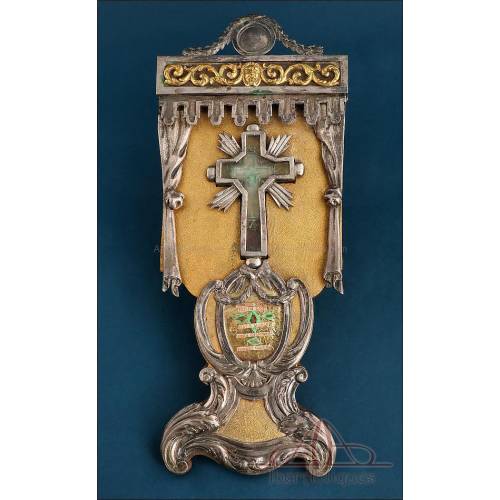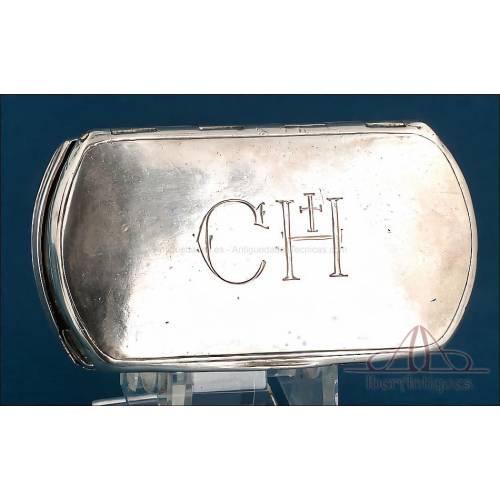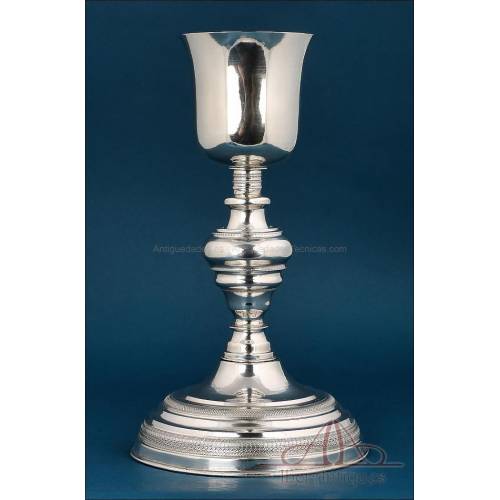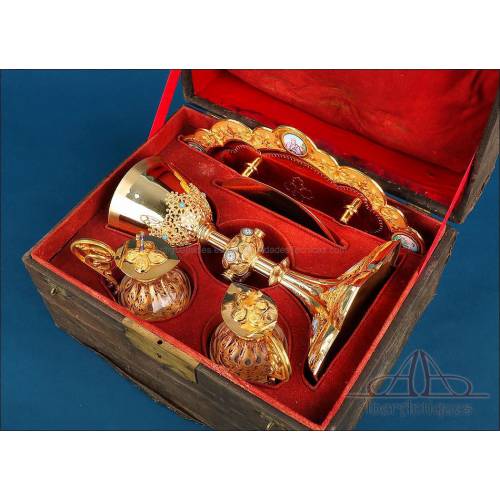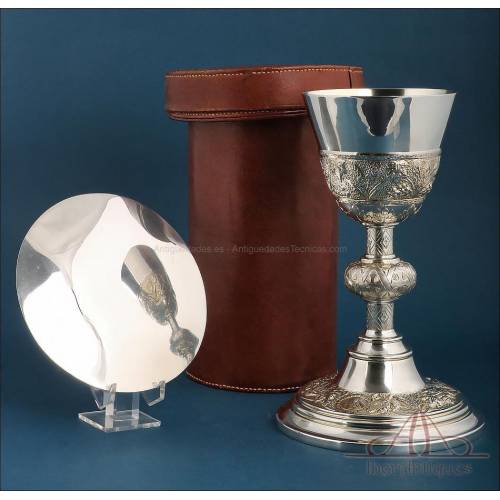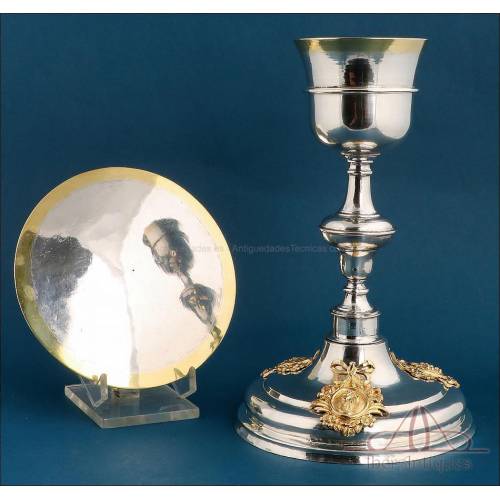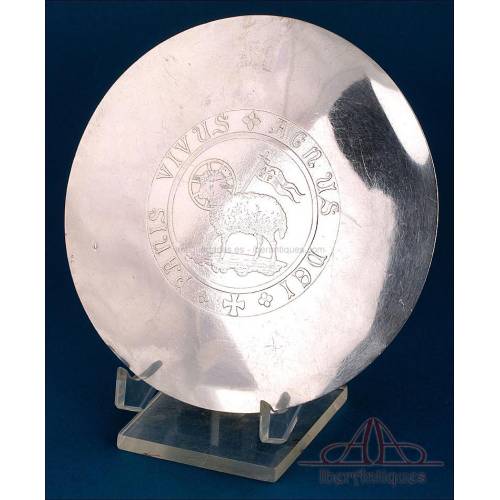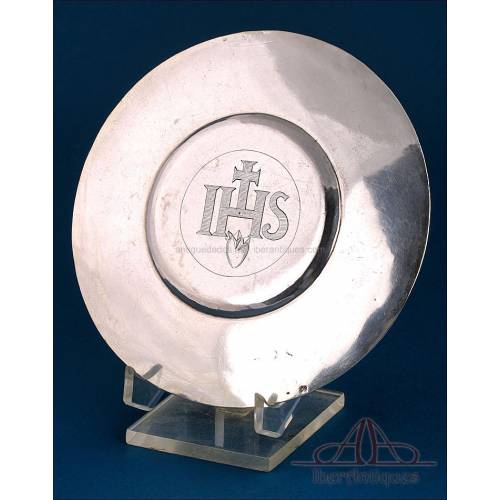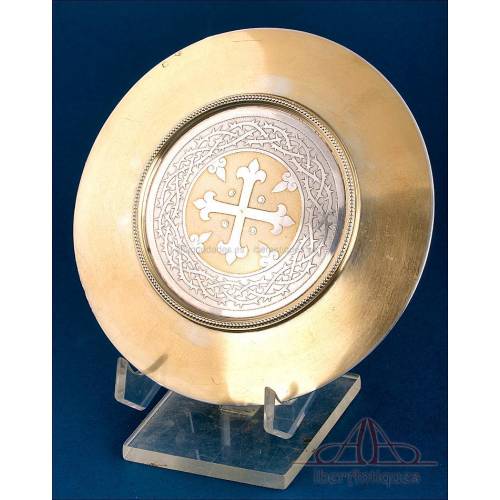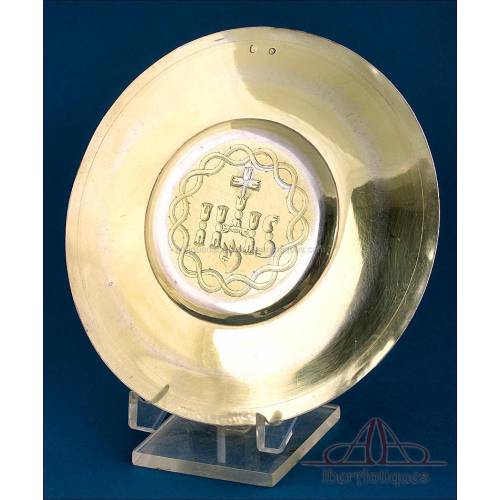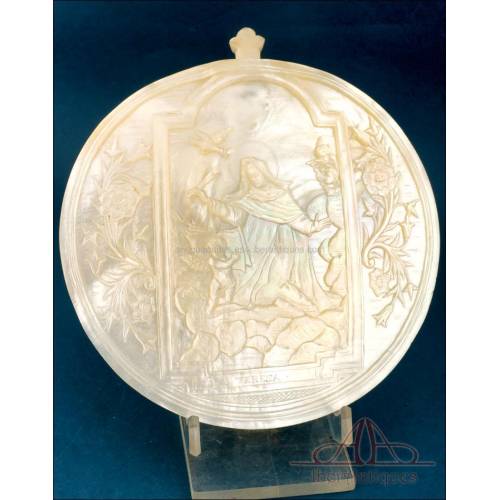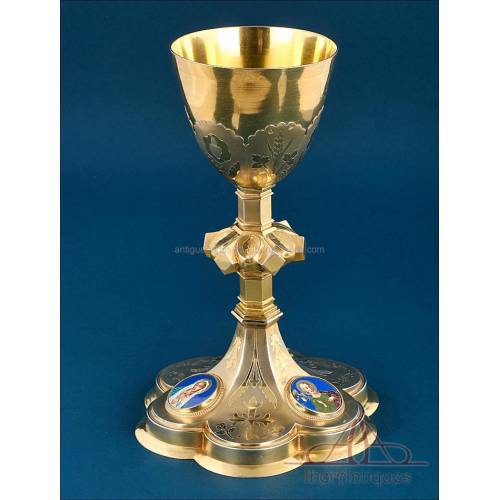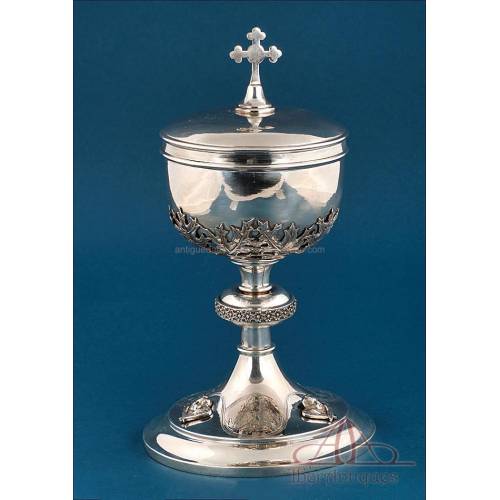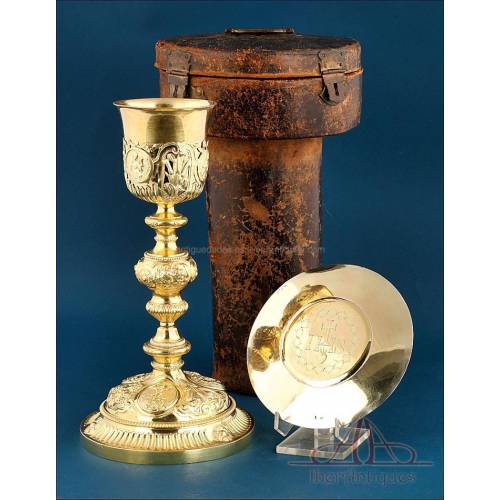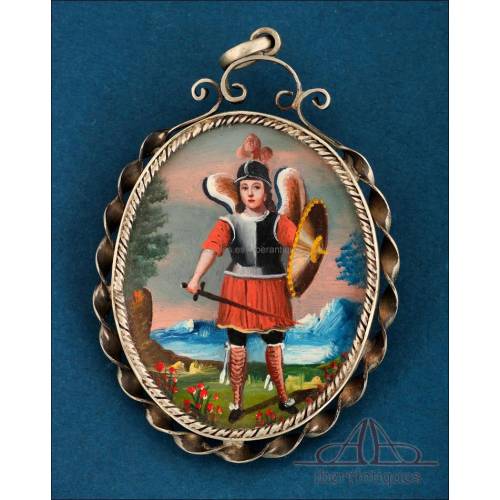E-293
Antique Roman Style Gilded Silver Chalice with Paten. France, 1932
Antique Roman-style chalice in gilded silver with paten. France, 1932. Hallmarked, engraved, with original case. A fine liturgical collectors item.
Antique Roman Style Gilded Silver Chalice. France, 1932
This magnificent antique chalice, made in France by the silversmith Amédée Cateland, successor of the renowned Armand Caillat, and dated at the base to the year 1932, stands out for its beautiful Roman style, with solid lines and a wide cup that evoke the solemnity and strength of traditional liturgical worship. The entire set is crafted in gilded silver, both the chalice and the paten, and is preserved in excellent condition, stored in its original case lined with red velvet and silk.
The chalice features a sober yet deeply symbolic decoration. The base, highly polished, is surrounded by a delicate engraved frieze of vine motifs. The grape leaves and clusters clearly allude to the Eucharistic wine. Above this decoration and as a central element, there is a rustic cross formed by two intersecting logs, evoking the wood of Calvary, humble and powerful.
The node, classic in shape and well proportioned, bears a Latin inscription: “ET MARIA JUXTA STABAT”, which translates to “And Mary stood near” or “And Mary stood by.” This phrase comes from the Gospel of John (19:25), where the Virgin Mary is described standing firmly by the cross of her Son. This inscription adds profound spiritual meaning to the piece.
Inside the base of the chalice is the engraved inscription: “PAUL AMIAND, 15 JUILLET 1932”, likely the name of the original owner or the priest for whom it was made. There is also a small silversmith's plaque that reads: “AMÉDÉE CATELAND ORF., SUCCESSEUR D’ARMAND CALLIAT, LYON”, an important detail, as Calliat was one of the most renowned ecclesiastical silversmiths in 19th-century France. His workshop was continued by Cateland in Lyon with the same artisanal excellence.
The accompanying paten is also made of gilded silver, featuring a beautiful image of the Mystic Lamb in the center, radiating beams of glory. Hallmarks are visible on the rim of the paten, as well as on the base and the upper rim of the chalice cup. The set is harmoniously preserved and shows only light signs of use, consistent with its age and its authentic liturgical use.
This set is ideal for an active priest, someone preparing for ordination, or for solemn reintroduction into a parish, where it can continue its sacred purpose.
Dimensions: Chalice: 18.2 cm (7.17 in) high, 11 cm (4.33 in) cup diameter, 14.2 cm (5.6 in) base. Paten: 15.5 cm (6.1 in).
Total Weight: 616 g (Chalice 541 g, Paten 175 g).
History of Amédée Cateland
Amédée Cateland was a distinguished liturgical silversmith from Lyon, France, active during the early 20th century. He inherited the workshop of Armand Calliat, one of Europe’s leading creators of ecclesiastical silverwork in the 19th century. Calliat was renowned for his exceptional designs of chalices, monstrances, reliquaries and other sacred objects, many of which were commissioned by cathedrals, churches and the Vatican itself. After his passing, Cateland took over the workshop and maintained the same high standards of artistic and technical excellence. Pieces crafted by Cateland are known for their elegant restraint, fine symbolic detail and precise execution. Today, chalices bearing the Cateland name are highly sought after by collectors and religious institutions alike, appreciated for their spiritual value and historical significance. This 1932 chalice is a superb example of the enduring legacy of sacred French craftsmanship.

